Talking SOP September 2012 [PDF, 673.84 Kb] - Tessenderlo Group
Talking SOP September 2012 [PDF, 673.84 Kb] - Tessenderlo Group
Talking SOP September 2012 [PDF, 673.84 Kb] - Tessenderlo Group
You also want an ePaper? Increase the reach of your titles
YUMPU automatically turns print PDFs into web optimized ePapers that Google loves.
Groundnuts:<br />
a highly<br />
nutritious<br />
crop with<br />
a variety<br />
of uses<br />
Groundnuts, or peanuts as they are<br />
often called, serve two major purposes.<br />
About half the world’s production is<br />
industrially processed for oil; the other<br />
half is for direct consumption providing<br />
a valuable source of protein, fat and<br />
minerals. Many third world countries are<br />
among the top 10 groundnut producers<br />
and it is clear that the crop generates a<br />
valuable cash income for many poor<br />
farmers in the developing world,<br />
especially in Sub-Saharan Africa and<br />
Asia. Since groundnuts are often grown<br />
in arid conditions, their fertilization<br />
requires special attention.<br />
Main groundnut cropping and<br />
production areas<br />
Country Production Area<br />
(1,000 tons) (1,000 ha)<br />
China 16.000 4.650<br />
India 5.500 5.300<br />
United States 1.649 444<br />
Nigeria 1.550 1.245<br />
Burma 1.300 850<br />
Indonesia 1.250 750<br />
Argentina 1.050 325<br />
Sudan 850 1.000<br />
Senegal 700 1.000<br />
Others 5.606 5.353<br />
Source: USDA<br />
The groundnut (Arachis hypogaea) is in fact a<br />
leguminous crop forming part of the “bean” family<br />
(Fabaceae). The oldest specimens, discovered in<br />
Peru, are 7,600 years old, however it is believed<br />
that the first groundnuts were cultivated in Bolivia,<br />
Paraguay or Brazil.<br />
Later, the crop spread throughout Mesoamerica<br />
and its Spanish conquerors brought the first<br />
groundnuts to Europe. European traders then<br />
introduced them into Asia and Africa. Finally,<br />
African slaves brought the crop to Northern<br />
America in the 1700s.<br />
Groundnut growth and harvesting<br />
Groundnut seeds are lodged just a few<br />
centimetres below the soil’s surface and the<br />
young plants usually emerge within a few weeks<br />
of planting. Flowering starts 30 to 40 days later.<br />
After self-pollination of the flowers, the stalk below<br />
the fertilized plant ovary elongates and curves<br />
downward towards the soil while the flowers<br />
wither. Later the stalk tip enlarges and pod and<br />
seed development begin. The nut then matures<br />
over the next 9 to 10 weeks. The pods ripen 120<br />
to 150 days after the seeds are planted.<br />
Groundnut harvesting generally takes place<br />
when the foliage begins to yellow. The plants are<br />
separated from the roots and are allowed to dry<br />
for several days, enabling the nuts to lose slightly<br />
less than a third of their original moisture content.<br />
After the nuts have dried sufficiently they are<br />
threshed, removing the pods from the rest of the<br />
bush. If the crop is harvested too early, the pods<br />
will be unripe. If they are harvested late, the pods<br />
will snap off at the stalk and will remain in the soil.<br />
Groundnut cropping<br />
Groundnuts should be grown in rotation with<br />
cereals such as maize or sorghum, which have<br />
been well fertilized, because they respond better<br />
to fertilizer applied to the previous crop rather<br />
than to the groundnuts themselves. Little nitrogen<br />
fertilization is normally required since atmospheric<br />
nitrogen is fixed in the root nodules.<br />
Basal applications of fertilizers are broadcast prior<br />
to planting. Depending on soil tests, recommended<br />
application rates vary from 10-30 kg N/ha, 40-90<br />
kg P 2<br />
O 5<br />
/ha and 40-90 kg K 2<br />
O/ha. Additionally, 250<br />
kg CaO/ha is often applied at bloom to prevent<br />
the formation of empty shells.<br />
K-Leaf TM SoluPotasse ® GranuPotasse ® Standard <strong>SOP</strong>


![Talking SOP September 2012 [PDF, 673.84 Kb] - Tessenderlo Group](https://img.yumpu.com/37691694/2/500x640/talking-sop-september-2012-pdf-67384-kb-tessenderlo-group.jpg)
![Slides [PDF, 378.59 Kb] - Tessenderlo Group](https://img.yumpu.com/49205668/1/190x143/slides-pdf-37859-kb-tessenderlo-group.jpg?quality=85)

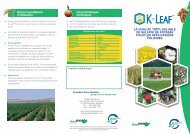
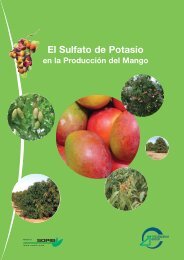
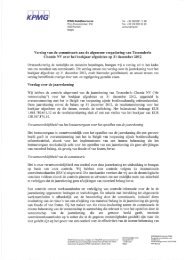


![Investor Seminar Presentation [PDF, 997.72 Kb] - Tessenderlo Group](https://img.yumpu.com/45992427/1/190x143/investor-seminar-presentation-pdf-99772-kb-tessenderlo-group.jpg?quality=85)

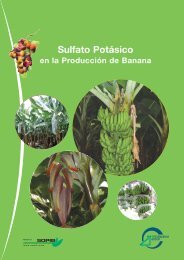
![Talking SOP May 2013 [PDF, 735.49 Kb] - Tessenderlo Group](https://img.yumpu.com/41045284/1/184x260/talking-sop-may-2013-pdf-73549-kb-tessenderlo-group.jpg?quality=85)
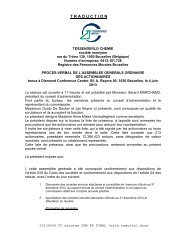

![Annual Report 2008 English [PDF, 2.69 MB] - Tessenderlo Group](https://img.yumpu.com/37691533/1/184x260/annual-report-2008-english-pdf-269-mb-tessenderlo-group.jpg?quality=85)